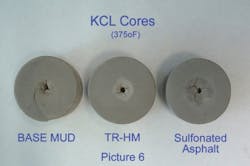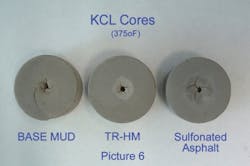Regulatory demands raising the bar for accurate flare gas measurement
Lynn Hunter
NEL
An estimated 150 bcm of natural gas is flared or vented globally every year (Source: Worldbank). This is equivalent to around 25% of the United States' gas consumption, or 30% of gas consumption in the European Union (EU).
It is not surprising, therefore, that governments around the world are taking action to reduce gas flaring and venting. As a result, regulation of gas flaring is becoming more stringent for energy-intensive installations, including the oil and gas sector.
As gas flaring regulations become more rigorous, operators will need to boost investment in technologies that can overcome the challenges presented in an often hostile environment.
The most prominent regulatory regimes are in the EU, Norway, Canada, and the USA. So how can operators meet the challenges of accurate measurement and reporting to meet the ever-evolving regulatory demands?
Effective regulation of gas flaring and venting relies heavily on accurate measurement. This is reflected in the rigorous flare measurement guidelines introduced by many countries to support flaring legislation, the most recent being the USA. Following the issue of a federal regulation by the Bureau of Ocean Energy, Regulation and Enforcement (BOEMRE), gas quantities must now be accurately measured by facilities in the Gulf of Mexico and US outer continental shelf (OCS) when processing more than 2,000 b/d of oil.
In the EU, the main instrument regulating the measurement of flare gas is the EU Emissions Trading Scheme's (ETS) Monitoring and Reporting Guidelines. Now in its second phase, with Phase III set to start in January 2013, the EU ETS has seen operators reporting their flare emissions since 2005. The trading of carbon dioxide (CO2) under the EU ETS gives yet another dimension to the need for accurate measurement. With CO2 treated as a tradable commodity, financial exposure must be kept to a minimum for all parties concerned.
Ensuring accuracy
The common features across most regulatory regimes is the requirement for operators to report flare emissions to a high degree of accuracy and the need to ensure that all equipment and tools used to derive emissions data are appropriately applied, maintained, checked, adjusted and calibrated at regular intervals. In the United States, operators are required to report flare and vented gas within a ± 5% measurement uncertainty. This is also the requirement in Canada, while the EU has applied a tiered approach when it comes to measurement uncertainty.
Larger installations are required to meet the higher tier measurement uncertainty of ± 7.5% on the quantity of gas flared. This relaxes to ± 12.5% for medium installations and ± 17.5%, for small emitters. The EU figures were based on experiences gained from the trial phase of the EU ETS during 2005 to 2007.
Despite the fact that the industry has performed flare gas measurement for years, it is still very much considered a new science. This is because measuring emissions from flares is very different to other emissions and gas flow measurement applications. The unpredictable nature of flaring in an often hostile environment, for instance, makes measurement extremely difficult and complex.
The primary purpose of a flare is to safely dispose of unwanted gas. This can involve random disposal of vast amounts of gas over a very short period of time. It is therefore essential that any measurement equipment installed in the flare stack does not obstruct gas flow in any way and incur significant pressure drop.
Measurement challenges
Flare systems can also be hazardous during operation, which can limit access to the flare for the purpose of installing, maintaining, and calibrating measurement equipment. This generally requires a scheduled shutdown of the flare system for safety reasons, which can have a major impact on production and cost. Due to the difficulties and inconvenience of accessing, removing, and replacing flow meters, periodic laboratory calibrations typically do not occur, which places a greater onus on in-situ validation of measurement systems.
The large variation in flare operating conditions can lead to a wide range of gas flow velocities, particularly if one flare is being used for all plant applications. As an example, during background flaring, gas velocities of 0.05 m/s (0.16 ft/s) can exist, and up to and beyond 100 m/s during emergency blow-down events. Upper extremities of 150 m/s (492 ft/s) have also been known. These conditions require flow meters with a wide rangeability, capable of measuring rapid changes. Changing operating conditions can also induce large variations in gas temperature and gas composition. With temperatures ranging from below -70°C (-94°F) to above 150°C (302°F), and typically liquids, gases and solids entrained in the flare line during high level flaring, the ability of the flow meter to accurately measure can be extremely challenging.
There is a huge variation in the design, type, size and construction of flares across industry. This is often dictated by the specific flare application, process needs and expected components in the flare gas stream. The diameter of the flare can range from as little as 8-in. (20.3 cm) to beyond 40-in. (1.02 m), which can challenge many measurement technologies.
For flare meters retrofitted to existing flare stacks, space and weight constraints, particularly offshore, can result in non-ideal installations and improvisation. For instance, the majority of flow meters require straight runs of pipeline before and after the flow meter to ensure ideal flow conditions. However, this is often not achievable, and bends and other obstructions can cause flow disturbances. Furthermore, the use of a flow conditioner to rectify such problems is generally not an option due to its obstructive nature.
Changes in viscosity and density also affect the flow profile through variations in Reynolds number. At low velocities, stratification, transient, and reverse flows are not uncommon. All of these conditions give rise to extremely complex flow measurement. Environmental factors also have to be considered when selecting measurement equipment, including the explosiveness and corrosiveness of the flare gas stream which can contain acids and hydrogen sulphides.
Added complexity
In addition to determining the gas flow through the stack, operators are generally required to report the composition of the gas. This is the case under the EU ETS where an emissions factor forms part of the overall calculation of the total CO2 emissions from the flare. Obtaining a composition measurement or extracting a representative sample direct from the flare stack, especially during emergency blow-down events, is extremely difficult. For this reason, composition measurements are generally performed by taking periodic samples of the contributing input lines to the flare, in conjunction with process modeling.
In the EU, the regulatory guidelines allow a number of approaches and methods to derive the amount of gas flared. The guidelines are not prescriptive in terms of specifying a type of technology, or a specific type of flow meter. Nor do they require a dedicated flow meter to be installed in the flare line (flare gas meter).
Operators therefore have the option of a combination of approaches. This often entails indirect measurement techniques, using flow meters installed in other contributing streams to estimate the gas routed through the flare. The major drawback with this method is the increased measurement uncertainty inherent when flaring is low compared to the other contributing streams. When applying the "root-sum-square method" to calculate measurement uncertainty, as specified in the associated guidance documents, measurement uncertainty can be as high as ± 100%. In contrast, when flaring is high compared to the other contributing streams, the calculation method can be extremely accurate with measurement uncertainty below ± 1%.
Many flare gas meters struggle to cope with the upper range measurements during high flaring, so in order to derive the best possible measurement uncertainty across the full range of conditions, operators may use the by-difference method. For normal flaring operations dedicated flare gas meters can be used with a superior measurement uncertainty.
Meter measurements
The ultrasonic meter (USM), time-of-flight model is the most widely used and developed flare gas meter to date. The main advantages of the USM are its wide turndown ratio, absence of moving parts and non-invasive design, which incurs virtually no pressure drop. It also can calculate the molecular weight from the speed of sound, which can be useful for determining density and support gas composition calculations.
There is a misconception that the measurement uncertainty quoted by the meter manufacturer is the actual measurement uncertainty of the installed meter. Some flare gas meter manufacturers quote a velocity range from 0.03 m/s (0.099 ft/s) up to 100 m/s (328 ft/s), and typical velocity uncertainty between 2.5% and 5% for velocities above 0.3 m/s. However, the uncertainty figures quoted by manufacturers are only strictly applicable under ideal flowing conditions which require a relatively stable and fully developed flow, free from liquids and solids, and with all critical dimensions of the pipeline installation accurately measured. In order to get the true measurement uncertainty any additional uncertainty arising from installation effects has to be added to the baseline uncertainty quoted by the manufacturer.
Flare gas USMs generally employ a single beam path, which means that they are sensitive to flow profile as compared to multi-path meters. One of the key issues with single path USMs is the failure of operators to quantify the upstream installation effects on flow profile and measurement uncertainty. Bends, valves and reducers tend to disturb the flow such that the velocity profile deviates from the ideal, axi-symmetric shape. Non-axial velocity (swirl) components also affect meter readings, and meter repeatability can be further impacted by turbulence generated by some fittings, especially when the meter is in close proximity to the fitting.
In circumstances where the USM cannot be installed in strict accordance with the manufacturer's instructions, including insufficient straight pipe lengths upstream and downstream of the meter, computational fluid dynamics (CFD) modeling is often used to determine the installation error.
This provides a cost-effective solution for assessing and correcting for installation errors in a flare line compared with bespoke testing. It also offers a means of visualizing what is actually happening in the pipe (in three dimensions) and to provide more information than can be gained from experiments. For this reason it is very beneficial, where possible, to perform CFD analysis before a meter is installed in order to determine the best sensor path configurations and optimum location and orientation of the meter.
As CFD is a highly specialized tool, the user must have a good understanding of both CFD modelling and flow metering. As with all theoretical modeling techniques, it is important to validate the models themselves, which will also have an associated measurement uncertainty. However, due to a lack of existing experimental data, including flare gas ultrasonic meters in low pressure and low Reynolds number gas flows, it has proven difficult to date to validate the CFD modeling software for flaring applications.
NEL has recently started a joint industry project, part supported by the UK Government's National Measurement System, to improve knowledge of flare measurement and provide input to international standards covering the application of flow meters in flare gas lines. Specific objectives of the project will be to obtain, through experiment, the necessary data to validate the use of CFD and better understand flare measurement.
While governments across the globe place increasingly stringent regulatory requirements on operators to both measure and reduce flare emissions, this is no simple task in the field. As regulations become more rigorous, there will be a pressing need for operators to boost investment in technologies that can overcome the challenges presented by the unpredictable nature of flaring in an often hostile environment. Ensuring that the diverse complexities are well considered and planned for will ensure that the most appropriate measurement technologies are used for accurate measurement and reporting.
Offshore Articles Archives
View Oil and Gas Articles on PennEnergy.com

